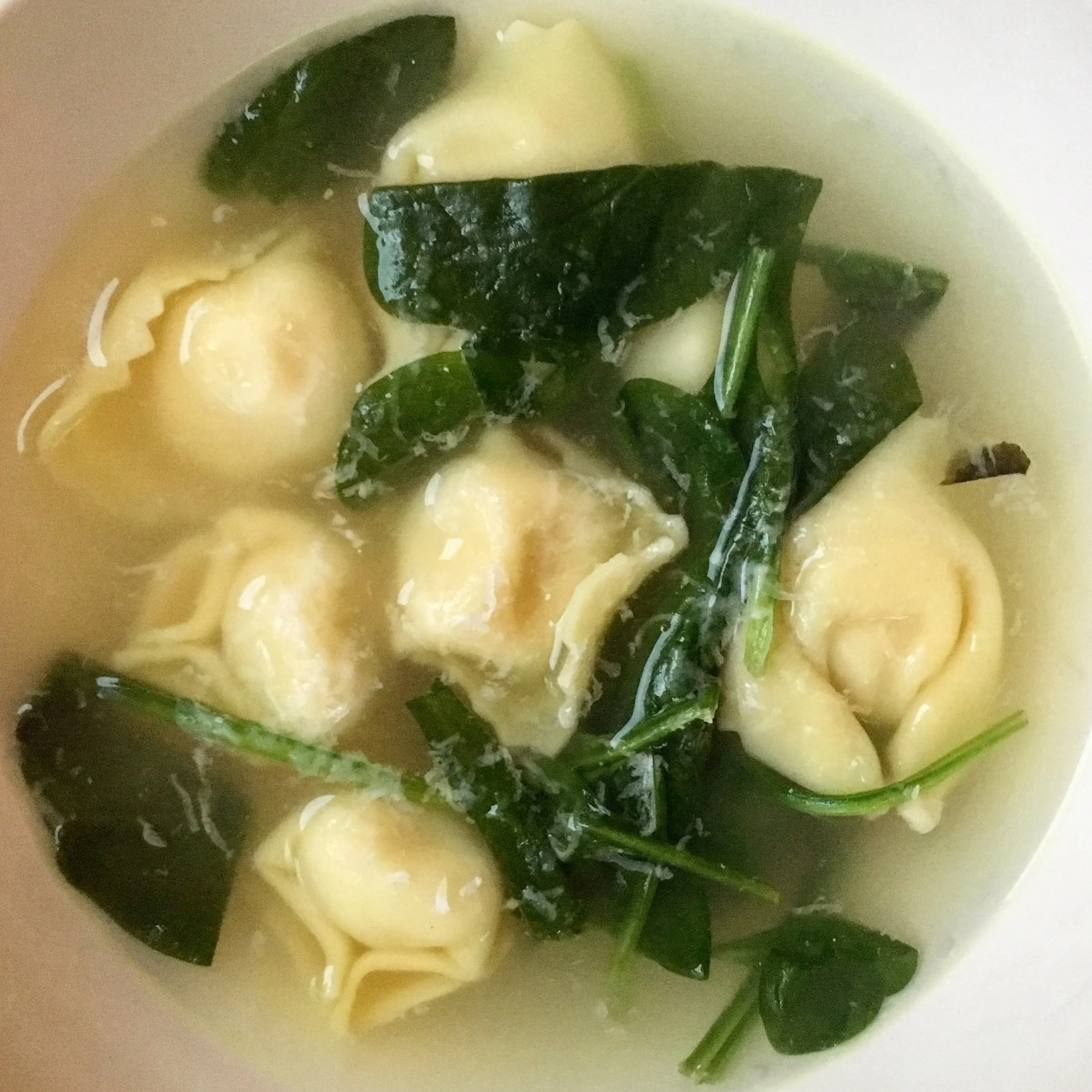Meal for Ordinary Time

It’s Monday, 5 PM.
My son sits in the kitchen with me, concentrating on his homework. My husband is picking my daughter up at running practice. It’s fall, leaves inching toward their colorful peak and twirling past my kitchen window as wind picks up from an incoming storm. I stand at the stove.
This is ordinary time.
In church life, Ordinary Time historically refers to the Sundays between Epiphany and Ash Wednesday as well as the Sundays between Penetcost and Advent. The specifics can vary between traditions. While the Catholic tradition still refers to these Sundays as “Ordinary Time,” many Protestant churches refer to it as “Time after Pentecost.”
What happens in the non-Ordinary Time? The big stuff: Holy Week. Easter. Pentecost. And then Advent, Christmas, whose 12 days start on Christmas Day, wrapping up on Epiphany.
There’s the regular, normal, ordinary time. And then there’s the feast time.
As I cook for my family, I try to remember this.
There is ordinary time. Time during which children have homework and practices and must get to bed at a reasonable hour. Time during which my husband and I work and do chores and make our household run. During ordinary time, we try to sit together for a daily meal amidst schedules that seem to become busier with each season. There’s milk for the children, sometimes some wine for the adults, vegetables that are eaten in varying amounts, often bread. We lay out our expectations for mealtime behavior (“Don’t yuck on my yum!”) and participation in set-up and clean-up activities (whoever sets the table gets to pick the seating, and everyone clears their own plates). We say grace. We talk about our days. We almost always follow the meal with a small dessert.
And then there’s feast time. Time when we invite others to our home, spend a day (or more) preparing our house and the food. There are appetizers and cocktails and a special main dish and accompanying sides and a show-stopping dessert. There is laughter (sometimes raucous), children stampeding (“Should the chandelier be shaking like that?”), hours of conversation, stacks and stacks of dishes to be cleaned, hugs and calls of “Let’s do this again!” as guests head home. Bedtimes are summarily ignored.
It’s tempting to make ordinary time into feast time. It’s tempting to make an idol out of the complex and delicious things we eat at feast time. It’s tempting to treat every meal like a party.
I wonder if this is one reason why we consume more media than ever about cooking yet fewer of us spend time cooking than ever before. We watch competitions in which chefs try to best each other by making the most fantastic culinary creations and wonder how we can re-create them at home. We scroll through perfect images of meals on Instagram and think that’s what life is always supposed to be like. The pressure to prepare a feast like these every single day feels overwhelming, and our daily grind feels more like, well, a grind.
To remember: there’s also ordinary time.
My friend Dirk, a theologian, said this about the importance of Ordinary Time in the life of the church: “It’s when God’s Word is doing its work to make us grow.” He then pointed to the parable of the seed in Mark 4:26-27: “And Jesus said, ‘The kingdom of God is like a man scattering seed on the ground. He sleeps and rises night and day, and the seed sprouts and grows—he knows not how.’”
The meals prepared on Mondays at 5, they are as important as the feasts. They are when we engage in the work of our lives: habits formed, skills learned, relationships built. We sleep, we rise, we work, we cook, we eat. We grow without always recognizing it.
To remember: this is not feast time, and the meal need not be a party. It can (should) be simple. Something to nourish our bodies as we sit together and nourish our relationships.
I stand at the stove. I prepare a meal for ordinary time. Ordinary, sacred time.
I often keep a package of cheese tortellini in my freezer for fast meals. I also like to have a jar of chicken broth base or vegetable broth base in the fridge so that I can easily make whatever amount of broth I need. Having broth base, boxed broth, or frozen homemade broth on hand makes homemade soup a quick process. Along with some baby spinach and parmesan cheese, a pretty simple dinner can be pulled together in less than 20 minutes. Full disclosure: my husband and I eat the soup. My children prefer the tortellini out of the broth with spinach (and bread) on the side.
Tortellini in Broth
Ingredients:
10 cups chicken or vegetable broth
20 ounce package tortellini of choice
Parmesan rind (optional)
5 big handfuls baby spinach, chopped into bite-sized pieces
Grated parmesan to taste
Directions:
Bring broth to a boil in a large stock pot. Reduce heat to medium. Add tortellini and parmesan rind (if using). Simmer for about 5 minutes, making sure tortellini float to the surface of the broth. Add spinach and cook for another minute, or until spinach is wilted. Remove parmesan rind. Ladle into bowls and top with as much grated parmesan as you'd like. Yield: 6 hearty servings. To scale down, use a 9 ounce package of tortellini and halve other ingredients.

